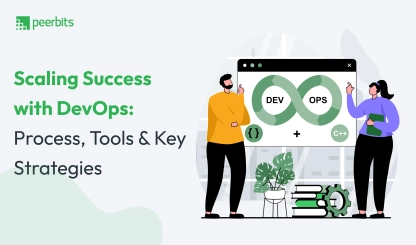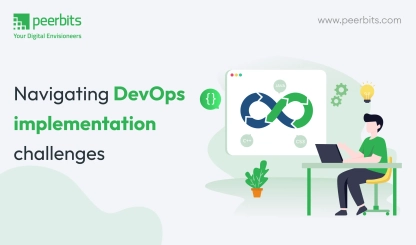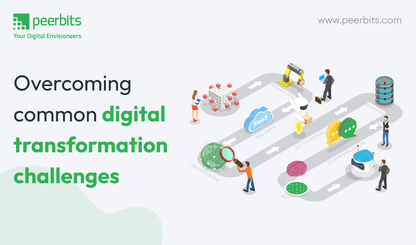Things are evolving fast, super fast. Especially when tonnes of apps & AI are available at your service 24x7 then who wouldn’t want things in milliseconds? People expect the same speed from everything these days. To keep up with such rising demand and competition, businesses have to turn towards modern app development solutions.
Out of these, microservices architecture has surfaced as a revolutionary force that has relieved many with its scalable, cost-effective, and agile features for app development.
But like any new technology, microservices have pitfalls too! Surely it simplifies complex applications by breaking them into smaller independent services. However, deployment & monitoring numerous servers manually becomes a big issue for various companies.
If you are also facing the same problem with microservices or want faster delivery in your app development then this blog is a perfect match for you!
Here, you’ll explore the benefits of automating deployment & monitoring, essential automation tools & practices for microservices in DevOps along with real-world examples proving the success of automation in microservices.
But first, let’s have an overview of all the major struggles businesses suffer in manual deployment and monitoring.
Major challenges of manual deployments & monitoring
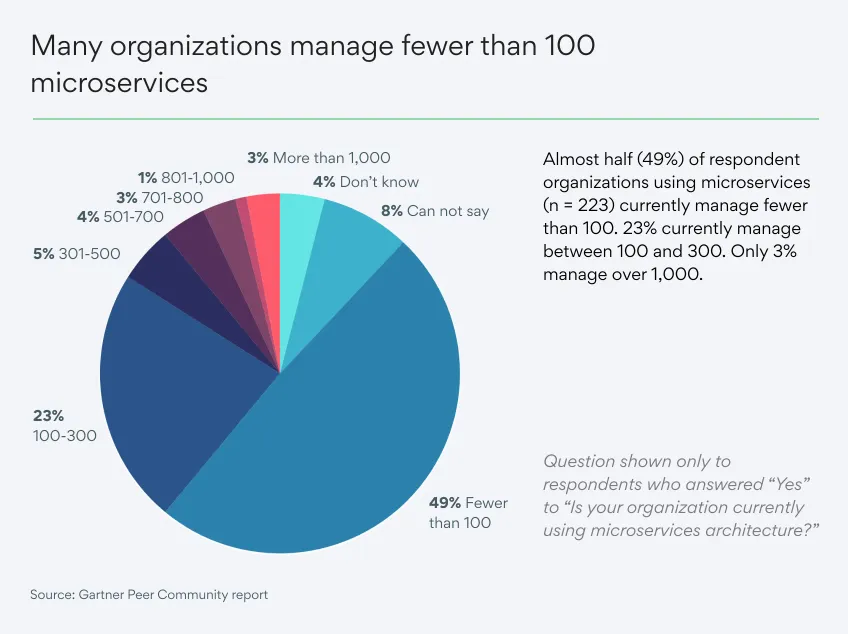
Microservices are an awesome discovery. But they stay useful until it's for small-scale apps or in lesser amounts. Once a large application comes into the picture, very few companies go beyond 1000 microservices due to several limitations as follows:
-
Deployment delays: Manually deploying updates to each microservice of the application is highly time-consuming and prone to errors. The smallest of mistakes can result in long delays in the entire application release.
-
Micromanaging mayhem: With numerous microservices on the list, manually monitoring their health becomes a juggling act. Developers have to regularly check logs, performance metrics, and individual service statuses. In this information overload, missing out on something critical can also turn out to be a costly mistake.
-
Human error: Manual deployments and monitoring are easily susceptible to human error. A missed configuration change, a typo in a script, or even overlooking a failing service can lead to serious issues in production.
-
Slow feedback loops: Identifying and fixing problems manually takes time. By the time, a developer spots issues, it usually has impacted users or caused a domino effect on other services of your application.
-
Scaling nightmares: As your application grows, manually managing deployments and monitoring becomes unsustainable. On top of that, adding more microservices means adding more manual work, that is difficult to scale and costly too.
DevOps automation in microservices: Your application ninja!
It's obvious that manual deployment & monitoring, will not be enough to reap the maximum benefits of microservice architecture. That’s why automating these processes with the help of DevOps solutions turns out to be the ultimate fix. Here are the four key advantages of using automated DevOps microservices:

1. Faster delivery cycles
Haven’t we all been waiting for this? DevOps automation significantly accelerates delivery cycles by implementing CI/CD pipelines. These DevOps pipelines automate the process of integrating code changes, running tests, and deploying applications. All this leads to rapid and reliable delivery of new features and updates.
Also, developers can commit code frequently with the help of CI/CD, whereas an automated pipeline makes sure that changes are quickly tested and deployed to production. It results in apps with faster delivery cycles & faster time-to-market. That’s what you call a win-win situation!
2. Improved consistency & reduced human error
Microservices in DevOps achieve phenomenal consistency in deployment processes through DevOps Automation. Apart from reducing the risk of human error, it also standardizes the deployment process by using automated scripts and tools.
These tools ensure that each deployment follows the same steps and configurations bringing in more reliability and predictability to the applications.
3. Automatic scaling & resource management
It is one of the popular advantages of DevOps automation. Automatic scaling takes up the place of manual intervention, allowing applications to respond swiftly to changes in demand. It gives modern businesses a massive upper hand against their competitors.
Along with that automation of resource management to monitor performance and adjust resources dynamically based on varying loads liberates developers from a tiring responsibility. It leads to optimal use of infrastructure, improved cost efficiency, and sustained performance even during peak usage periods.
4. Proactive monitoring & early issue detection
Proactive monitoring is a highly significant component of DevOps automation. Automated monitoring tools continuously track the performance and health of microservices, identifying potential issues before they impact end-users.
These tools also generate alerts for anomalies, giving teams an early detection to prevent downtime. Through this, developers also get deeper insights into application behavior, helping teams optimize performance and reliability beforehand.
Benefits associated with automating delivery pipelines of DevOps microservices help businesses rapidly innovate, maintain high-quality standards, and deliver exceptional user experiences. But how exactly it happens? Which automation tools are used for automating deployments & monitoring in DevOps microservices? Let’s decode that!
Key automation tools & practices for DevOps microservices
A list of important automation tools along with best practices that will help you in the fast delivery by DevOps microservices are as follows:
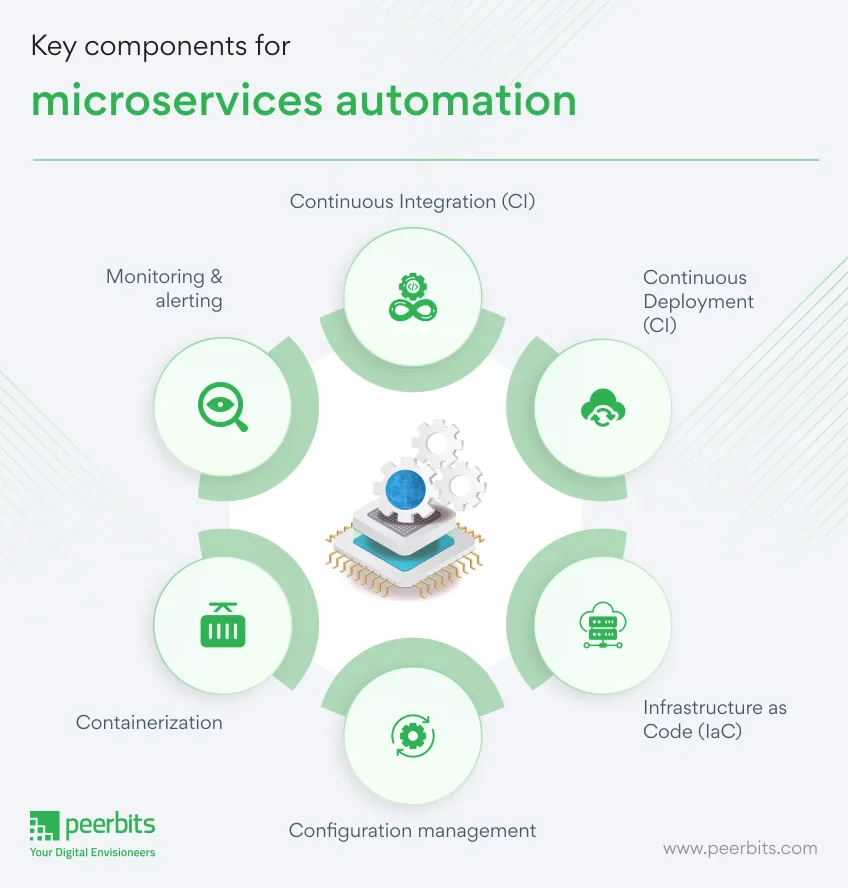
1. Continuous Integration (CI)
Continuous Integration (CI) is an important component of DevOps microservices life cycles. Because every time code is changed it is responsible for the automated building and testing of code. CI pipelines streamline the development process by integrating code frequently, which eventually helps in the early detection of bugs and ensures that code changes are stable.
Some of the popular CI tools you can use are:
-
Jenkins: An open-source automation server that supports building, deploying, and automating.
-
GitLab CI/CD: It offers a seamless CI/CD experience with version control being integrated into GitLab.
2. Continuous Delivery (CD)
Continuous Delivery (CD) is the real king of automation! It automates the deployment of applications and makes sure that code is always in a deployable state. It also keeps code in such a state that can be released to production at any time with minimal manual effort.
Some of the famous CD tools include:
-
AWS CodeDeploy: It automates code deployments to any instance, including Amazon EC2 instances and on-premises servers.
-
Azure DevOps pipelines: Here, you can get automated build and release pipelines integrated with Azure(though many usually prefer AWS).
Also read: How can DevOps automation services with AWS-CDK help in business expansion?
3. Infrastructure as Code (IaC)
Infrastructure as Code (IaC) is the process of managing and provisioning computing infrastructure through machine-readable code. It promotes consistency and repeatability to infrastructure management, reducing the chances of human error.
Popular IaC tools you can prefer are:
-
Terraform: It allows the creation, modification, and versioning of infrastructure safely and efficiently(but being a new tech it's not developer-friendly).
-
Ansible: It is responsible for cloud provisioning, configuration management, and application deployment automation.
-
Chef: It manages infrastructure by writing code, providing a way to define infrastructure as code.
4. Configuration management
Configuration management is a significant step for maintaining consistency across different microservices. It involves managing and automating the configuration of systems and software.
Some of the popular configuration management tools are:
-
Ansible: It uses playbooks to define configurations and automate the deployment process.
-
Puppet: It automates the delivery and operation of software, ensuring consistency across environments.
-
Chef: It manages system configuration, providing a way to automate the setup and maintenance of servers.
5. Containerization
Containerization involves packaging the software code of applications and all their dependencies into containers(not the real ones!). These containers can then be used consistently on any infrastructure.
-
Docker: One of the most popular containerization platforms that simplifies the development and deployment of microservices with a consistent runtime environment.
-
Kubernetes: Popular container orchestration tool that manages containerized deployments for scaling, load balancing, and resource allocation.
6. Monitoring & alerting
Automated monitoring is essential for maintaining the health, performance, and fast delivery by DevOps microservices. It involves tracking various metrics and setting up alerts to detect and respond to issues. Setting up alerts also allows the DevOps team to quickly respond to issues, minimizing downtime and ensuring that microservices perform optimally.
Some monitoring tools you can check are:
-
Prometheus: Incredible open-source monitoring and alerting toolkit.
-
Grafana: It is a fabulous visualization tool for interactive dashboards.
Success stories of automation with DevOps microservices
Netflix
Challenge: Netflix, a world-renowned online streaming service struggled to manage its global system with frequent updates. They also struggled to keep the system stable during varying traffic loads. Manual deployments and monitoring were becoming increasingly complex and time-consuming for them.
Solution: Netflix adopted a microservices architecture and heavily invested in automation. They built a rigid CI/CD pipeline using tools like Jenkins and Spinnaker to automate code building, testing, and deployment. Monitoring tools like Prometheus and Grafana were also utilized by them to track the health and performance of their microservices.
Impact: Netflix successfully acquired a 70% reduction in deployment time. On top of that, they also experienced a 50% increase in deployment frequency through automation. With such help from microservice automation, Netflix was able to innovate faster, improve user experience, and handle traffic spikes efficiently.
Harri
Challenge: Harri, which is known for providing human resources technology for the hospitality industry, encountered a hike of 35 percent in its active user base. Their architecture struggled to scale quickly when demand spiked. They also faced issues in deploying updates without service interruptions as they dealt with critical customer operations such as scheduling, shift trading, and clocking systems.
Solution: Harri shifted to a containerized microservices architecture. They also chose Amazon EKS to manage its containers for smoother & seamless execution across different environments.
Impact: Harri is now able to add up new microservice clusters in 20 seconds which is 90 percent faster than its previous state. Even in peak hours, Harri experienced 80 percent faster speed without any downtime or service disruptions. On top of that, they also reduced their computing costs by 30 percent.
Why trust Peerbits for microservices deployment & monitoring?
With microservices solutions getting more complex with time, you will need expert assistance from DevOps service providers who are experienced with all the necessary practices of microservices construction & offer you detailed consulting.
Here’s how Peerbits can help your company with microservices automation:
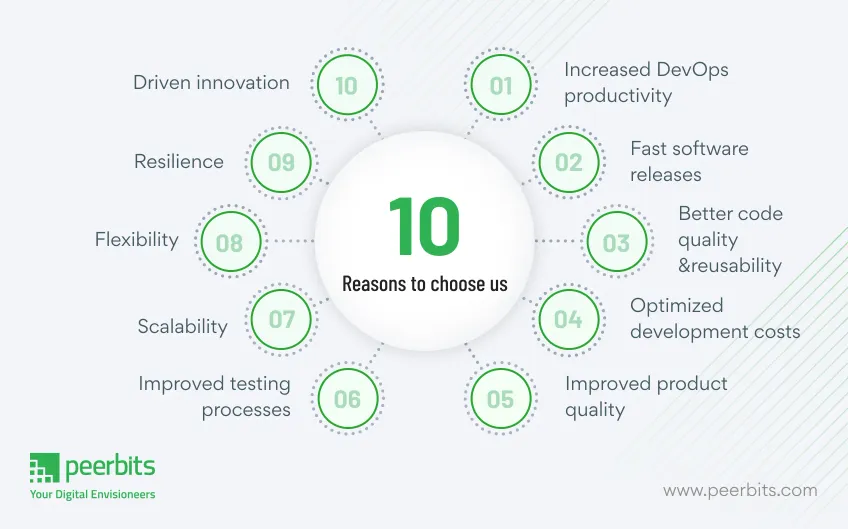
Wrap up
As discussed, automating deployments and monitoring is highly important for achieving faster delivery cycles and ensuring the reliability of microservices. The DevOps core principles and automation tools like CI/CD pipelines, IaC, and container orchestration supercharge your business development efficiency, reduce human errors, and offer guaranteed scalability. A skilled DevOps microservice provider can easily achieve all with the latest techniques and remove all the burden of finding a trustworthy consultant & strategist personalized according to your DevOps needs. So get connected with us and optimize your microservices development like a Pro!


